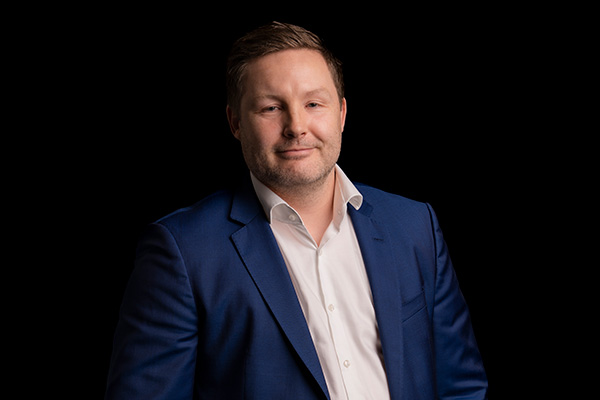Casper Wilkens
Research leader

Project title
Equipping algiNate with Uronic Acids (ENNUA)
What is your project about?
The sea holds great potential when it comes to the production of biomass for the circular bioeconomy - a biomass that can be used for such diverse things as medicine, biomaterials and animal feed. Today there are farms that grow different seaweed species for these purposes. Among these brown algae, the cell walls of which include the polysaccharide alginate. Alginate is a negatively charged polysaccharide consisting of guluronic and mannuronic acids. These give alginate and similar sugars special properties which, among other things, can be used commercially for encapsulation of medicine and a substitute for gelatin in food. Oligosaccharides, smaller pieces of alginate, are used today as medicine, but they could also be used in biomaterials, to protect cells from damage during freezing and as prebiotics, stimulating good bacteria in our intestinal system. In the project, we will design enzymes that can add new sugars to alginate, so that these polysaccharides will have new properties that can form the basis for new applications in everything from biomaterials to medicine.
How did you become interested in your particular field of research?
As a student at first Roskilde University and later University of Copenhagen, I quickly became interested in structural biology due to my supervisors' great passion for the subject and the interest in carbohydrate-active enzymes has continued since my time as a PhD student at the Technical University of Denmark. The carbohydrate-active enzymes are closely connected with the green transition. In order to make better use of them in an industrial context, there is a need for an understanding of how they can be optimized, which requires a deeper understanding of how they work. This is precisely what has fascinated me since my time as a student.
What are the scientific challenges and perspectives in your project?
The project's biggest challenges are to understand how one type of enzymes work and then to transfer this knowledge to another type of enzymes, which will subsequently be able to produce polysaccharides that do not occur naturally. These polysaccharides will form the basis of bio-based alternatives to petrochemical-based materials and medicines. In the long run, the project will establish a biotechnology platform that can be used for other types of enzymes that can produce additional bio-based chemicals.
What is your estimate of the impact, which your project may have to society in the long term?
Most of the chemicals we surround ourselves with today are derived from oil and natural gas. Alternatives to these must be found if we are to make ourselves independent of oil and natural gas and at the same time build a society based on a circular bioeconomy. This is a colossal task, but the project will in the long run help us base our society on bio-based chemicals.
Which impact do you expect the Sapere Aude programme will have on your career as a researcher?
The grant enables me to immerse myself even more in my research field and at the same time open up a new direction within the field, which the Sapere Aude grant makes possible due to its length and size. The Sapere Aude grant is also a recognition of me and my collaborators' research so far, as well as a belief in me as a leading research leader in my field of research. The latter will increase my chances of securing grants in the future and attract the best younger researchers and collaborators to my research group.
Background and personal life
Since my research is also one of my hobbies, which often requires staying at research stations abroad, it is important to disconnect completely with the family every now and then. This happens, among other things, on the west coast of Jutland, where there is something peaceful about looking at the waves and walking along the endless sea. It has given birth to one of my other hobbies, which is landscape photography, where nature has all the control and the photographer has to put up with waiting for the right moment.
View all research leaders here
Research institution
Technical University of Denmark
Research field
Enzymology
City of your current residence
Roskilde
High school
Himmelev Gymnasium
